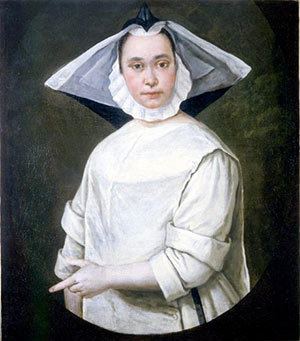Clara Tott (1440 - 1520) worked at the Court in Munich as a singer. Her father was Gerhard Tott, a city Councilman. Much of Clara's story seems to center around her love affair and eventual marriage to Frederick I, Elector Palatine. The pair tried to keep their relationship secret, but in 1472, when their eldest son wanted a position in the cathedral chapters of Speyer and Worms, they came clean about their marriage.
Secret marriages aside, Clara was apparently influential in musical circles. Scholars say that she was musically talented and had a lasting effect on the musical life at court in Heidelberg. When Fredrick wanted to organize a local choir, Clara convinced him to appoint the famous singer Johann Steinwert von Soest as its leader.
![Image result for Casulana [Mezari], Maddalena](https://musictheoryexamplesbywomen.com/wp-content/uploads/1544/08/Maddalena-Casulana.png) Maddalena Casulana (c. 1544 – c. 1590) was likely born at Casole d'Elsa (based on her name). Little is known about her early life, but it is believed that she received her musical education in Florence. She was a composer, and lutenist and is the first female composer to have her music printed and published in the history of western music.
Maddalena Casulana (c. 1544 – c. 1590) was likely born at Casole d'Elsa (based on her name). Little is known about her early life, but it is believed that she received her musical education in Florence. She was a composer, and lutenist and is the first female composer to have her music printed and published in the history of western music.It appears that Maddalena was close to the de' Medici family. Her first book of madrigals included the following dedication to Isabella de' Medici: "[I] want to show the world, as much as I can in this profession of music, the vain error of men that they alone possess the gifts of intellect and artistry, and that such gifts are never given to women." This is a telling statement coming from Maddalena - it demonstrates how she viewed being a female composer at a time when the field was dominated by men.
 |
| Caterina Assandra, Unknown |
There are approximately 14 known compositions attributed to Caterina. She was the first Italian nun to have an entire collection of musical works published.
Want to hear some of the work of Maddalena and Caterina? Hop over to YouTube and check out Caterina's Duo Seraphim and Maddalena's Vagh' amorosi augelli.
Let me know below if you enjoyed hearing about these musical women!
No comments:
Post a Comment